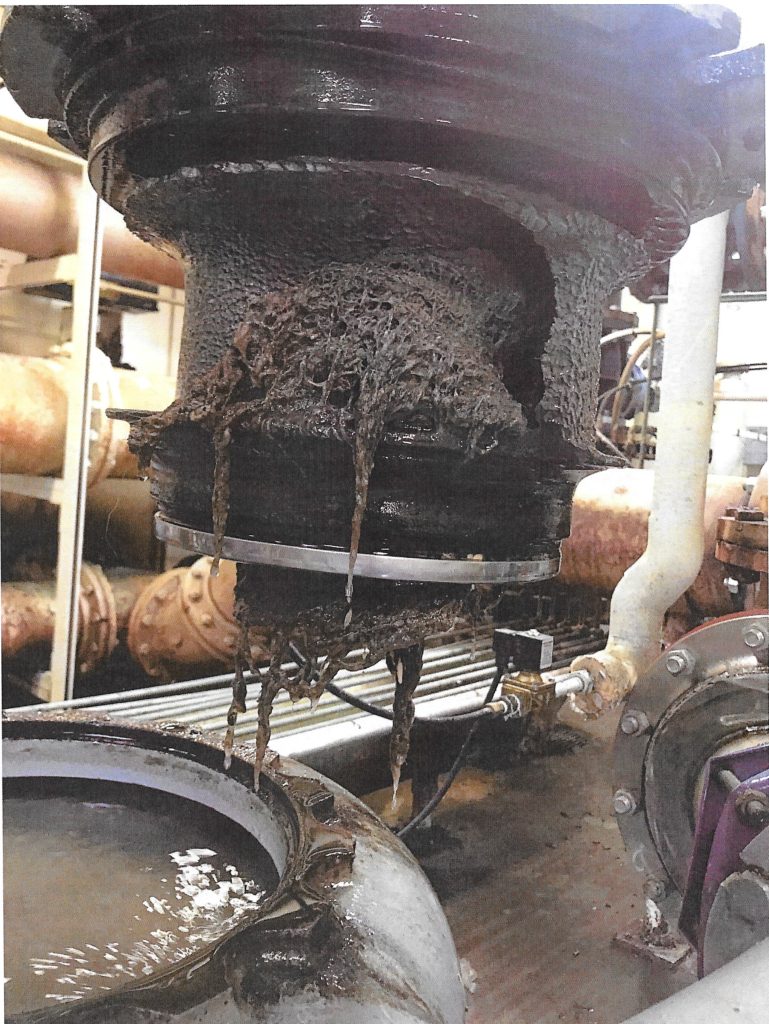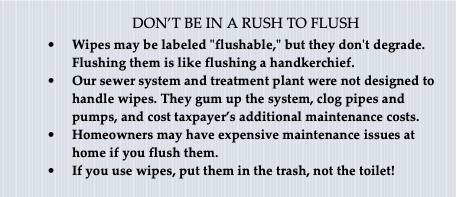Upgrades due for Manchester Wastewater Treatment Plant

The Sequencing Batch Reactor pump showing rags ("flushable" wipes) clogged in impeller at the Manchester Waste Water Treatment Plant. This has to be manually removed from the pump impeller at least twice weekly. Photo from Dan Geyer, WWTP supervisor.
At last Monday's Manchester Village Council meeting, Wastewater Treatment Plant (WWTP) Supervisor Dan Geyer along with Ted Erickson from village engineers Process Results, presented an overview of the WWTP's needs over the next 30 or so years.
Geyer reviewed the significant capital improvements and maintenance projects made to the WWTP since 2010, at a cost of nearly $500,000 in upgrades. "These important projects have been critical in improving the reliability and efficiency of existing collection and treatment systems," he said, "and much of the work has been performed by Village staff."
When the current WWTP was upgraded and expended in 1989, according to a memo from Erickson, the common method of dealing with "rag" material such as wipes, hair, plastics, and other debris that makes it into the wastewater system, was to use grinding equipment to reduce its size, making it manageable to expel wastewater into the downstream process.
However, over the last few years, "flushable" wipes have been made out of increasingly tough fibers that will either pass through the grinders uncut, or recombine after being cut by the grinders. This, combined with the grit (sand, stones, etc.) that finds its way into the system, is causing premature wear to the equipment, plugging pumps and valves, and affecting the efficiency of the treatment process.
Part of the solution, which also would accommodate future flows as well as the needs of the community, recommended by Erickson is to install a "headworks building," with mechanical screen and grit removal to remove inorganic materials that adversely impact the downstream process. Erickson's concept for the building would be approximately 16'x24', masonry building and would include flow channels for the manual trash rack, house a grit-washing system, and dumpsters to collect the screenings and grit for disposal. The actual grit removal system would be located outside the building in a concrete vault, he added.
The conceptual project cost for this improvement would be $1.2 million, which could be financed by a state "Clean Water Revolving Loan," with current interest rates of 2.0% over a 20 year period. Current bonds for the City Road building and current sewer improvements will expire early in 2021, so any bond issue required to finance this would basically replace that millage expense on future tax bills.
Geyer also spoke to the need for new and updated equipment, showing Council photographs of rag clumps stuck in the impeller (grinder), and noted that the observable wear had taken only 6-7 years, with equipment that would normally have a 15+ year life expectancy. The large amount of grit and rags requires the clumps to be manually removed about twice per week, he added.

From the Village Newsletter, Spring/Summer, 2019
"The advent of wide-spread use of cleansing wipes has changed the properties of wastewater in the Village's system (and virtually all other communities with wastewater systems)," Geyer said. "This has presented new challenges in keeping wastewater conveyance and treatment equipment operating reliably and efficiently."
Geyer also noted that the village's wastewater treatment system is currently operating at approximately 75% capacity. When capacity reaches 80%, he said, it is time to look at the need for future expansion; and he recommended a long-term capital improvement plan be developed.
The headworks replacement and improvement at the WWTP is the first component of the four-step plan Geyer presented to improve the reliability and efficiency of all existing infrastructure. He recommends that this portion of improvements should be budgeted for completion in the 2021-22 Fiscal Year. Once the headworks project is on the timeline, the second and third steps, which include force main improvements and flow equalization along Vernon Street (where overflow can be an issue) and replacement of the Riverside Pump Station, which is aging and under-sized for future needs. Geyer recommends these stages be budgeted within the next 10 years.
A larger project on the horizon (step four) would be converting the WWTP's technology from Sequencing Batch Reactors to Membrane Bio Reactors, which would provide additional treatment capacity at a higher level, and at a significant cost of $5-10 million. This is not, however, in the immediate plan; but will likely need to be considered at some time in the future.
Village Manager Jeff Wallace added that over the past 30 years the village has made significant improvements to its wastewater treatment system and it is now time to start planning for the next 30 years. "These are not government mandated projects," Wallace said. "It is good management practice to have a comprehensive plan for the future, and we are trying to make it manageable within our current structure."










You must be logged in to post a comment Login